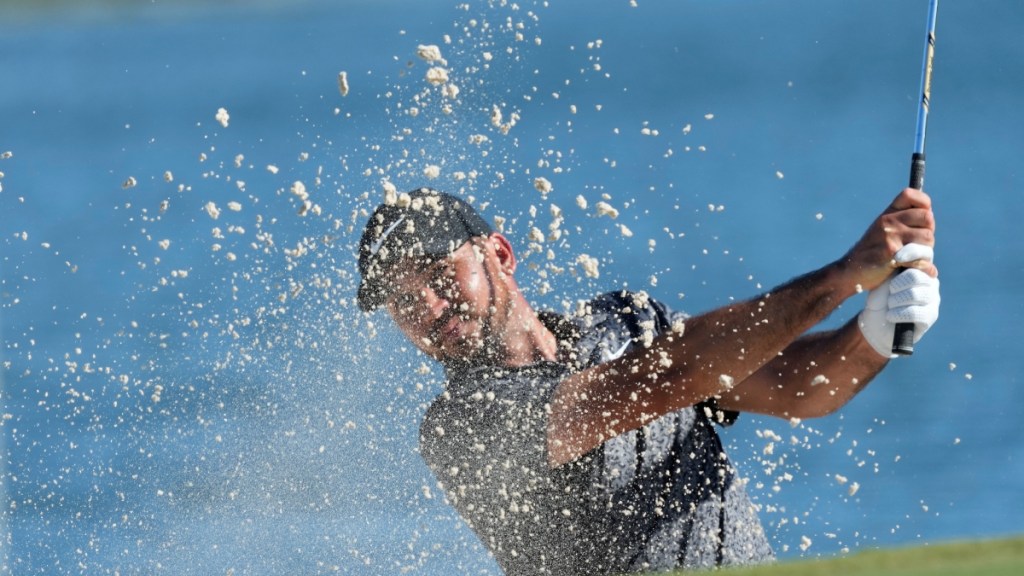Let’s get to the heart of the matter. Much like you, dear reader — assuming we’re all amateur casual golfers here — the first thing to come into my mind when I learned that the governing bodies of golf had finally decided to curtail the distance a golf ball is capable of travelling was: How many yards do I stand to lose? Golf journalism could wait: This was personal.
If you haven’t been following the discussion, let’s get you up to speed. The Royal & Ancient and the USGA are the governing bodies in golf. Among other aspects of the game, these good folk define stringent conditions that golf club equipment manufacturers need to follow. Think — materials used in golf head construction, length of shafts, size of driver heads, and so forth.
Now there’s been a lot of discussion over the last decade about reducing the distance a golf ball can travel. I know: it sounds ridiculous, given how hard we amateurs work at trying to hit it longer. But this isn’t about us, but rather, long-hitting pros who’ve changed the way the game is played at the highest level. The ‘Bomb & Gouge’ style of play has meant that there’s way more premium today on length off the tee than precision or even strategy. And that has had purists of the game up in arms bemoaning the loss of creativity and finesse to brute strength. On a practical level, this has also meant that golf courses have had to add length and modify layouts to be able to preserve their challenge. That translates into expenses, a greater strain on resources, and is generally not a long-term solution or an ecologically desirable practice.
That’s pretty much the gist of it — rein in the obnoxiously long hitters.
So, coming back to the rollback. Your columnist has always been in favour of the move, with one caveat: the rollback wouldn’t apply to the golf balls amateurs play with. This ‘bi-furcation’ has been hotly debated but seemed like a fair resolution. I mean, why should amateurs, who struggle to hit the ball very long in any case, be penalised just because the average pro hit it too long? Golf equipment companies have been ardently opposed to that solution, ostensibly because it’s not financially viable to have different production lines for pros and amateurs. I’m not convinced: the equipment, including Tour Specific balls, that pros play with, is already very different from what we can buy off the shelves. In any case, that’s water under the bridge now. The golf ball rollback is here, and it makes no exception for pros or amateurs. We’re all going to have to deal with it. So here, all you need to know.
In the simplest terms, the new conforming golf balls will be tested at 125 mph clubhead speed (183 mph ball speed) with a spin rate of 2200 RPMs and launch angle of 11 degrees. Currently, golf balls are tested at 120 mph (176 mph ball speed), 2520 RPMs with a launch angle of 10 degrees. So what does that translate into? According to the USGA’s research, top-tier pros who swing at 125 mph stand to lose 13-15 yards, average pros, and top-level amateurs might hit it about 10 yards shorter, while women pros can expect to drive it 5-7 yards less. For us hapless amateurs with an average swing speed of about 93 mph, that means about five yards less with the Driver. That last bit is key: the loss of distance will be most perceptible only with the longest club in the bag and practically unnoticeable five-iron onward.
Interestingly this isn’t the first time that an exercise like this has been carried out. What the USGA calls the ‘Overall Distance Standard (ODS)’ has been in play since 1976 and has been amended three times (1980, 2002 and 2004). The test conditions are calibrated to the launch conditions of the longest hitters of the time, and the current standards (120 mph) were implemented in 2004.
Assuming you’ve been playing that long, have you gained any distance over the last decade and a half? Most of us have, and it’s not just been the golf ball, but modern Drivers that are more forgiving and enable us to hit the ball further. In case you’re wondering, a reassessment of that club’ conforming standards is next on the governing bodies’ agenda.
The number of dissenters has vastly outnumbered the supporters of the move, especially among the pros. One divergent voice has been Rory McIlroy, who aired his views on X (ex-Twitter): “I don’t understand the anger about the golf ball roll back,” he wrote. “It will make no difference whatsoever to the average golfer and puts golf back on a path of sustainability. It will also help bring back certain skills in the pro game that have been eradicated over the past 2 decades.” I’m not so sure about the amateur bit there. Isn’t that subjective? For a senior who hits the ball 180 yards off the tee, every yard counts.
But there is some good news. Golf ball manufacturers are required to produce balls that conform to the new conditions only from January 2028 onward. Yes, I know what you might be thinking: some of my unscrupulous playing partners — you know who you are — have already started stocking up on golf balls. At this rate, they’ll have a cache that will potentially last their entire golfing life.
For those of us who intend to play by The Rules, there’s no understating the power of Absolute Denial. For recreational golfers, the golf ball rollback will go into effect only by January 2030. That gives us six years to come to grips with the inevitable loss of yardage—plenty of time to stick our heads in the sand and forget all about it. We’ll cross that bridge when we get to it. Or we might just have to play short of it.


